German inventor Claus Claudius patented a design for a long-recoil automatic pistol in 1895, and we ran across a couple photos of an example of it that was actually manufactured:
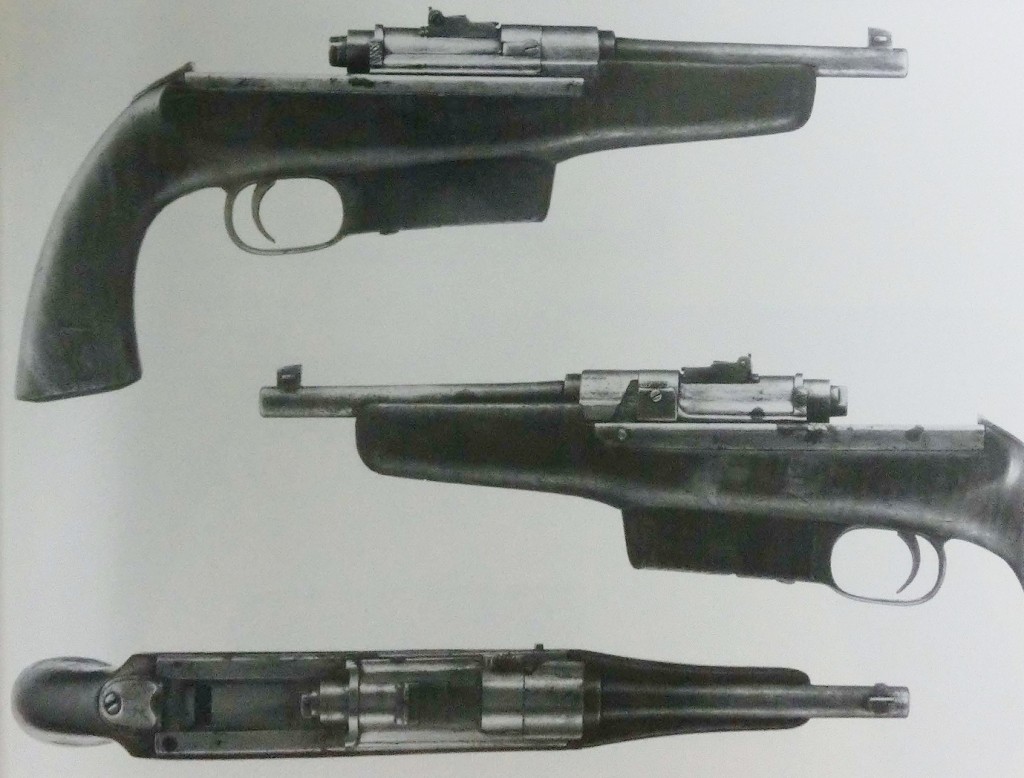
We found the photo in Faustfeuerwaffen II, by Christian Reinhart and Michael am Rhyn – a pretty cool compendium of pistols tested by the Swiss Army. At any rate, it looked interesting, and I wanted to find out more about it.
Some patent searching led to two sets of patents filed internationally, one in 1895 (which covers this actual manufactured example) and a second set in 1900. Let’s start with the physical sample gun – it is an 1895 pattern, and operates using a long recoil system and a rotating bolt. The bolt locking lugs are cut in a helical shape with matching grooves in the breech. Being a long recoil system, the bolt and barrel remain locked together for the full length of travel (which you can see in the exposed rails behind the bolt in the photos above). The spiral shaped locking lugs are intended to force the system to remain locked during recoil travel, as the rearward motion acting of the lugs behaves like a screw being tightened. Once the rear limit of travel is reached, the bolt locks in place and a return spring under the barrel forces the barrel forward, and now the lugs act like a screw being loosened. The bolt rotates to unlock, freeing the barrel and allowing it to be pushed forward to its resting position.
In most long-recoil systems, the bolt is automatically released to chamber a new cartridge when the barrel reaches its forwardmost position. The patent description of Clausius’ pistol, however, suggests that the bolt would remain open until a lever on the side of the action is manually depressed by the shooter to release the bolt. The photographs of the prototype pistol above, however, show no sign of such a lever. The patent also describes an unusual set of controls by which the energy in the compressed firing pin spring can be used to push the bolt open, allowing the gun to be unloaded without firing. That system also appears to be absent from the prototype pistol. That shouldn’t be too surprising, as such a system adds needless complexity to the design, which can be manually opened by simply pulling the bolt back by hand.
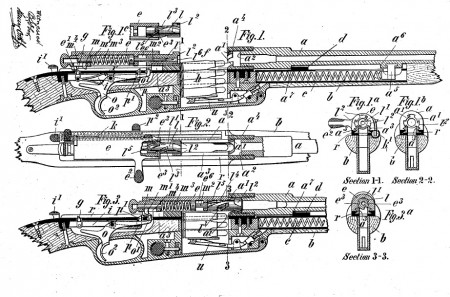
The prototype pistol photographed above is likely the only existing example of Clausius’ pistol, as it was not adopted by any military force (it may not have even been formally tested anywhere), nor did it go into commercial production. However, Clausius continued to tinker, as evidenced by a subsequent set of patents he filed in 1900.
His subsequent idea was to maintain use of a recoil-operated system, but have only a portion of the barrel actually move. The majority of the barrel would be fixed, which would reduce the chances of dirt or fouling jamming up its movement. What he wanted to do instead was have basically the chamber area of the barrel made as a separate plug, which would recoil inside the main body of the barrel upon firing.

This would actually make the gun a short-recoil type, since the drawing shows the chamber plug moving only a short distance, and inertia providing the motivation for the bolt to continue traveling backwards after the chamber stopped. As it happens, this is very similar to the floating chamber system patented by David “Carbine” Williams in the US several decades later for use in .22LR conversions.
To my knowledge, no examples of the 1900 version exist, and they may never have been built in the first place. If they were build, there is still some serious question as to the practicality of the system in a moderate or large cartridge, as high pressure gas is likely to leak between the barrel and chamber plug, fouling the system and potentially blowing back into the shooter’s face. Perhaps the system could have been perfected using a cartridge case longer than the chamber plug (thus sealing the gap between the barrel and chamber) and balancing the bolt and spring weights to prevent the action from opening until pressure had dropped significantly? I don’t know…but it doesn’t look likely, because Clausius dropped the idea himself.
A final set of patents was registered in 1905, which appear to abandon the floating chamber idea in favor of a fairly typical short-recoil system. The barrel (the whole barrel) recoils just a short distance, and the inertia from that movement drives the bolt fully rearward:
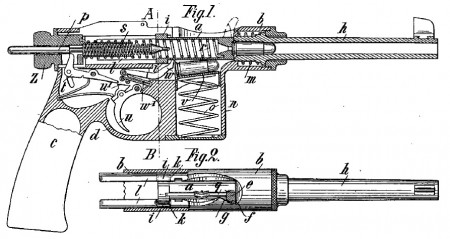
Patents
1895 Version:
Swiss Patent #11481
British Patent #25042
US Patent #593835
1900 Version:
British Patent #13649
1905 Version:
Swiss Patent #32998
French Patent #351597

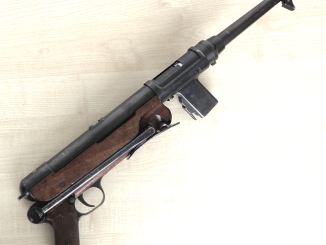

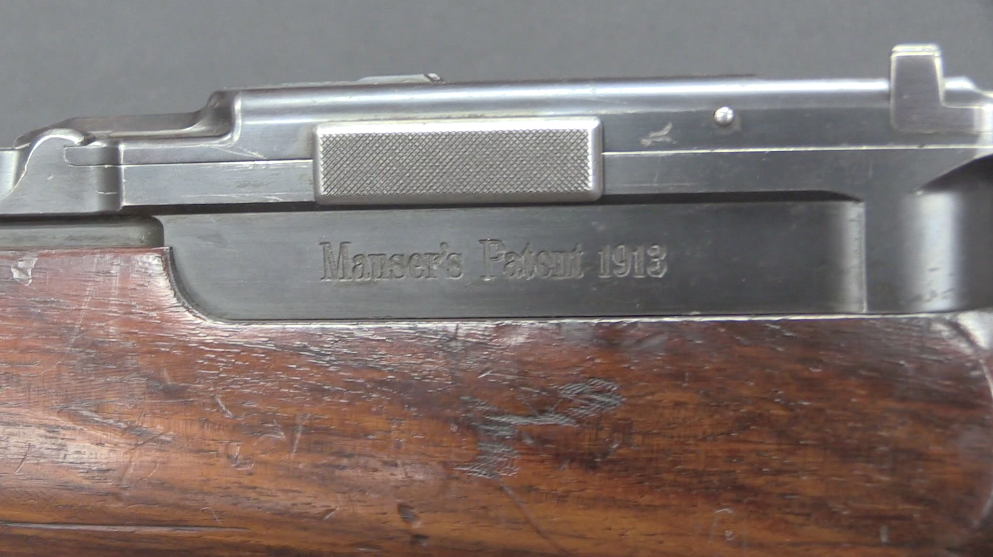
I haveknown Christian Reinhart, before and after he got shot in the spine. I tryed in wain to contakt him. Hi publichrttold me, that he changed sex and wany nothing to do with his former life. He is now called Chrissy Reinhart.
Peter
wait what, I get that he was one of the author’s of Faustfeuerwaffen II Selbstladepistolen but could you provide a little more context.
Well, gotta say that’s not what I would have expected to hear…but regardless, best wishes to her in her future endeavors! That series of books was/is one heck of a labor. FWIW, if you know of a set of them available for a reasonable price, let me know – I would love to have a set in my own library.
The Winchester Models 50 and 59 shotguns used a recoiling chamber system akin to the Clausius 1900 patents. The Winchester shotguns were modestly successful, but the conventionally gas operated Remington Model 1100 buried it commercially.
100 + year old experimental firearms cool stuff
about the longer case sealing the gap between the barrel and chamber that could probably work or something like the nagant revolver perhaps
but it is probably very tricky to get the timing right so that it only starts unlocking if the pressure is low enough
and ist also going to be frustrating when you are testing the gun to take it apart every time a case explodes and bits of brass get stuck in between the barrel and the chamber plug
Something to think about.These were state of the art 120 years ago. So was the Winchester 94 and Mauser C 96. The 38 revolver we still carry today essentially existed then; our DAO and their “Hammerless” were basically the same. Before these people were still using muzzleloaders widely. Ammunition was expensive; again shades of today. We see designs today that are evolution of designs done on a desk lit by gas light. If this had its bugs worked out maybe we would never have seen a Luger . These old seeming quaint ideas can come back long after we file them under d for dead. Case in point: the Gateling Gun left behind by Custer; used on San Juan Hill; junked…now is back as the MIMI-GUN a formidable weapon. Who knows what is on some inventor’s workshop bench that just may be a working version of something long ago dismissed… this is the fun of our mutual study of weapons. Happy 4th to All Andy
I love the experimental firearms, loco mondo!!!!!!
Nearly all auto loading pistols designed at beginning
of the last century followed the pattern of shrinked
rifle construction except J.M.Browning’s. All had a
barrel extention, or upper receiver with a light
breechbolt nestled therein. Browning’s, in contrast
to others, had barrels mounted in the breecbolt or
slide and pionered today’s auto loading pistol lay
out. Clasıus’s 1895 was also not exception of this
rule.
An unsupported front section of a long case exposing
out from a floating chamber would cause that portion’s
separation from main body and following serious
malfunction.
Most of short recoil pistols have residual gas
pressure within the barrel when unlocking overed and
breechbolt rearward push occurs either by this power
or by gained momentum.
Looking at the designs, it almost seems like the original objective was to make an auto-loading rifle, and when the action could not handle the pressure, adapt it to a pistol. Only successful case of this sort of down-sizing I know of was the Thompson SMG, which started out trying to be a .30 caliber rifle, and found .45ACP easier to digest.
Like someone else said, got to hand it to Browning: when he designed a pistol, he designed a pistol, and when he designed a rifle, he designed a rifle.
What Ammo does the model 1895 use? because that magazine looks like rifle rounds.
The patent doesn’t specify a caliber (they generally don’t), and the Reinhart book just says 7.63mm.
Well there is something like French’s ribollye (i hate spelling…) pistol that uses 5 round 8x50mm en-bloc magazine..
Gentlemen, I’m trying to identify an oddball pistol. I’d appreciate any help.
The closest match I’ve found so far is the patent drawings for the Clausius M1905. As I cant attach pics to this post I’ve added a link to a photo I took, I hope that is ok. I’d be happy to send more pics if the admins approve.
https://dl.dropboxusercontent.com/u/2608091/Odd%20pistol%20right%20side.JPG
Interesting – can you send me links to the photos (or the photos themselves), at admin@forgottenweapons.com? Not sure what that pistol is, and I’d like to see more (and probably do a post on it). Thanks!
Thanks for the quick reply, you’ve got mail 🙂
Williams style floating chambers operate as gas pistons, they’re intended to get gas into them.